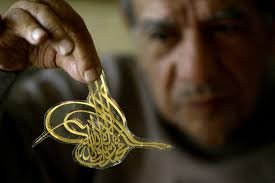Arabic calligraphy is more than just a form of writing; it is a beautiful expression of culture, identity, and history. In the UAE, this artistic tradition holds deep significance, reflecting the nation’s heritage and pride. From grand architectural designs to modern art installations, Arabic calligraphy remains an integral part of the cultural landscape.
The Historical Roots of Arabic Calligraphy

Arabic calligraphy has a long and fascinating history. It dates back to the 7th century when the Arabic script began evolving from ancient inscriptions. The spread of Islam played a major role in the development of calligraphy, as the art form was widely used to transcribe verses from the Quran. Over time, it became a symbol of religious devotion and artistic excellence.
In the UAE, the significance of Arabic calligraphy is evident in the intricate designs found in mosques, palaces, and historical landmarks. The use of calligraphy in Islamic architecture is a testament to its timeless appeal and cultural importance.

The Different Styles of Arabic Calligraphy

Arabic calligraphy is characterized by its various styles, each with its unique elegance and purpose. Some of the most prominent styles include:
- Kufic: One of the oldest forms of Arabic calligraphy, known for its geometric shapes and straight lines. It is often used in architectural decorations and Quranic inscriptions.
- Naskh: A more readable and fluid script, commonly used for everyday writing and book transcription.
- Thuluth: Recognized for its large, curved letters and ornamental quality, this style is frequently seen in religious texts and monuments.
- Diwani: A decorative and intricate style that gained popularity during the Ottoman era, often used for official documents.
- Ruq’ah: A simple and modern style used in informal writing and signage.
Each of these styles showcases the creativity and skill of the calligraphers who have preserved this art form for generations.

Arabic Calligraphy in Modern UAE
In the UAE, Arabic calligraphy continues to thrive as a vital element of contemporary culture. The government and cultural institutions actively support initiatives to preserve and promote this traditional art. Events like the Sharjah Calligraphy Biennial and Dubai International Arabic Calligraphy Exhibition provide platforms for artists to showcase their talent and share their works with a global audience.
Moreover, calligraphy is not limited to traditional mediums. Modern artists in the UAE have integrated calligraphy into various forms of contemporary art, including sculptures, murals, and digital creations. This fusion of tradition and innovation ensures that Arabic calligraphy remains relevant in today’s artistic landscape.
The Role of Calligraphy in Education and Heritage Preservation
Educational programs and workshops are key to sustaining the practice of Arabic calligraphy. In the UAE, numerous cultural centers and institutions offer classes for individuals of all ages to learn the fundamentals of calligraphy. These programs not only teach the technical skills of writing but also impart the cultural and historical significance behind each script.
Furthermore, museums such as the Louvre Abu Dhabi and the Etihad Museum frequently host exhibitions that celebrate Arabic calligraphy. These exhibits provide visitors with a deeper understanding of the art form’s role in the region’s heritage.
Arabic Calligraphy in Architecture and Design
Architectural landmarks across the UAE stand as magnificent examples of how Arabic calligraphy is woven into the country’s visual identity. The Sheikh Zayed Grand Mosque in Abu Dhabi, for instance, features stunning calligraphic inscriptions from the Quran, designed in elegant Thuluth script. Similarly, the Museum of the Future in Dubai is adorned with Arabic calligraphy, showcasing quotes from Sheikh Mohammed bin Rashid Al Maktoum, etched into its futuristic facade.
This harmonious blend of calligraphy and architecture serves as a powerful reminder of the UAE’s dedication to honoring its cultural roots while embracing modernity.
Prominent Calligraphers in the UAE
The UAE is home to numerous talented calligraphers who have gained recognition for their exceptional work. Artists such as Mohammed Mandi and Abdul Fattah Mohammed have made significant contributions to the world of calligraphy. Their creations have been displayed in prestigious exhibitions and incorporated into iconic architectural projects.
Through their dedication and mastery, these calligraphers have inspired younger generations to pursue the art and continue the legacy of Arabic calligraphy in the UAE.
Conclusion
Arabic calligraphy is a cherished cultural treasure in the UAE, symbolizing the nation’s rich heritage and artistic spirit. From ancient scripts to contemporary art, its influence is visible in every aspect of life. As the UAE continues to celebrate and preserve this art form, Arabic calligraphy remains a testament to the enduring beauty of tradition in a rapidly evolving world.
Whether through the intricate carvings in mosques or the modern designs of city landmarks, the elegance of Arabic calligraphy invites both locals and visitors to appreciate the profound connection between language, art, and identity. For those eager to explore this cultural heritage, the UAE offers countless opportunities to witness and experience the timeless art of Arabic calligraphy firsthand.
Also read: Career Opportunities and Job Market Trends in the UAE














